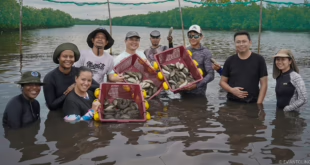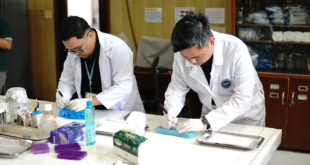By Development Communication Section / EGDJ Ayson

Eels of the genus Anguilla spawn in the open ocean. The larvae are carried by ocean currents to coastal habitats where they metamorphose to glass eels and then to elvers. The juveniles, which are also known as yellow eels then enter river systems and other freshwater bodies where they remain until they reach sexual maturity. Mature eels which are also known as silver eels migrate downstream to the ocean where they spawn and die.
In Southeast Asia, the Indonesian short-finned eel (Anguilla bicolor) is one of the most important species farmed for the Japanese unagi kabayaki market. Culture of A. bicolor however, is solely dependent on glass eels collected from the wild. Concerted R&D efforts on various aspects of eel aquaculture are needed to make production sustainable.
| Challenges in eel aquaculture | R&D areas that need to be addressed |
| Total reliance on wild seeds |
|
| Low survival from glass eels to elvers |
|
| High feed costs | Feed development using locally-available ingredients |
| Occasional disease problems | Health management |
| Focus on species that are in high demand | Development of culture techniques for other potential species |
This review of R&D needs was presented during the First Workshop on Enhancement of Catadromous Eel Resources in Southeast Asia in Palembang, Indonesia organized by SEAFDEC’s Inland Fishery Resources Development and Management Department (IFRDMD) last 26 to 29 April 2016.
 SEAFDEC/AQD Southeast Asian Fisheries Development Center | Aquaculture Department
SEAFDEC/AQD Southeast Asian Fisheries Development Center | Aquaculture Department



